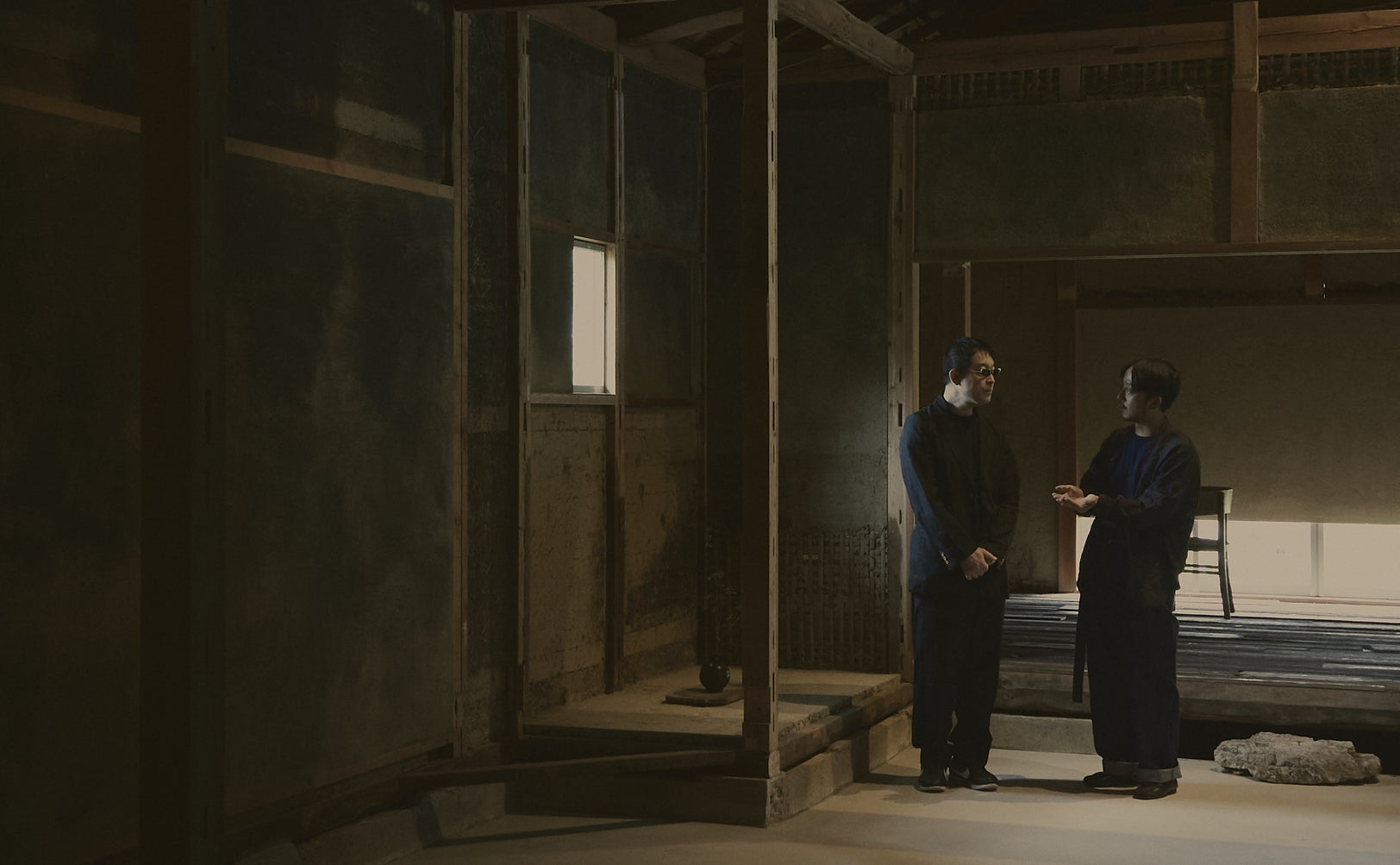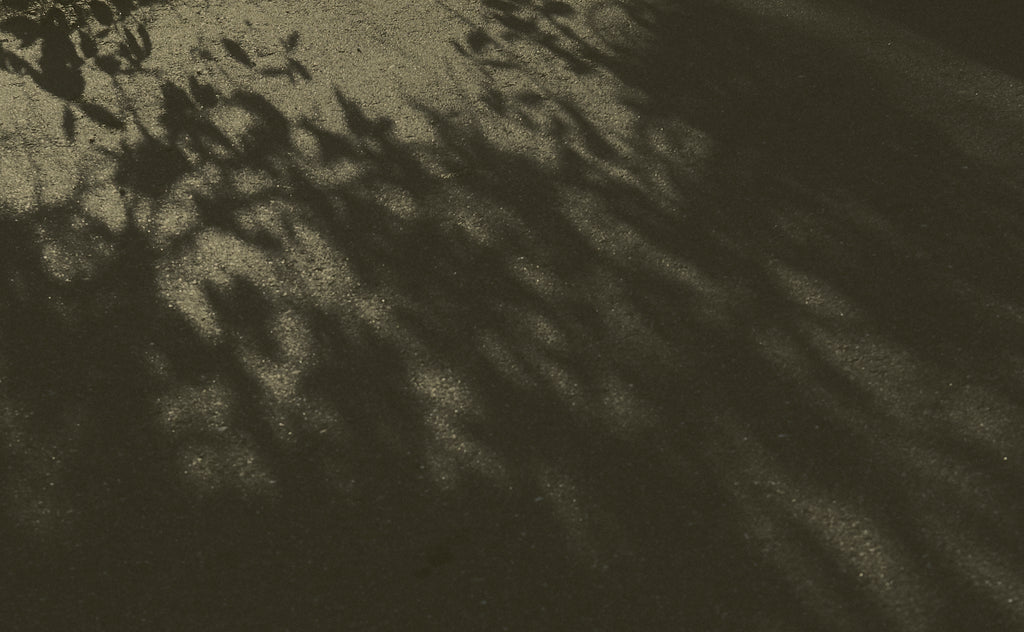

Interview
1
First half
People, Animals and Inanimate Objects Are All the Same Particles.
Kitagawa Issay ( GRAPH )
Kato Shunsuke ( NOTA&design )

Time to Examine
|
To start can you explain to us how QUANTUM was born. Kitagawa Issay (Kitagawa): I think the original catalyst was meeting Usui Yoshikazu who runs Yamato Co. Ltd. a funeral company in Kyoto. Japan has always been a country unique in the world for it's tolerance regarding religion. We go to shrines for New Year's, celebrate Obon in summer, eat Christmas cake in winter and get married in a chapel. While there is some regional variation, for better or worse ancient Japanese religious practices are decreasing. I first met Mr. Usui during the peak of the corona virus pandemic where if you died from infection you couldn't even be with your family at the end of your life or prior to cremation. For a long time we couldn't get together with people even if we wanted to and I spent a long time thinking about the future for myself and my parents who live in the countryside, I remember asking Mr. Usui, 'what is your take on funerals?' Mr. Usui, would you say your thoughts on funerals changed a lot during and after the corona pandemic? Usui Yoshikazu (Usui): I am not sure it is only because of the pandemic however since then it is undeniable that the pace of change has sped up. In Japan we have a fixed style of ritual for weddings, Shichigosan, Coming of Age ceremonies and of course funerals. However these days people don't need graves or Buddhist alters and funerals held with only family and close relatives are mainstream. This isn't a bad thing, however these changes are coming without time for people to adapt and I think everyone in Japan now is unsure what to do about funerals in the future. As such I think we all have to think for ourselves about how we will heal from the pain of losing a loved one, whether its a new form of burial or some other form of emotional support. |
 |
 |
Changing Views
|
Kitagawa: No one imagined or could have foreseen the things Mr. Usui just said. Before you could just give yourself up to the funeral, but not anymore. Therefore I think rather than these overly formalized events of today we will get closer to the true essence of funerals and rituals. Wake is written with the characters for 'through' and 'night', however originally it was ritual to party through the night. This was intended to mourn the deceased, what better to do when you are sad than laugh and party together. Japanese views on life and death is a world of contradiction. In this world we have this body of flesh, in the next world we have no body and so ghosts are transparent and have no feet. I myself think there is something not quite right about having a modern Buddhist or Shinto alter in my apartment, but then would I feel less strange with a full blown gorgeous Buddhist alter? I spent a long time thinking about what would work for me and being able to meet Mr. Usui and Yamato like this and propose QUANTUM has been truly meaningful. Kato Shunsuke (Kato): QUANTUM refers to physics, right? Where did you get the idea for that name? Kitagawa: People, animals and plants, all forms of life are made up of DNA and RNA. The base sequence, which holds the basic information for all life's genetic diversity, if you follow it back humans and bananas share about 50% or our genetic code and chimpanzees are 98.5% the same as humans. If you take a close look at them, forms of life that look completely different are unexpectedly similar on the genetic level. Looking at different religious sects' funerals, if we focus on the details they are all different but the sentiments behind them are the same. That is where the name QUANTUM came from. In the QUANTUM world people, animals and inanimate objects are all made up of the same small particles. If QUANTUM is based on the idea of examining things that are 'the same, but different', then that make a lot of sense to me. |

Discomfort with
|
In the concept of QUANTUM I think there is the principle of the essence of life and death including that of the heart and mind, when you began developing products around that was there some reason why you consulted Mr. Kato? Kitagawa: Developing products cannot be done with intuition and gut feelings alone, in the end artistic and aesthetic sense and at times science is required. Regarding those things Mr. Kato can create and design products not only conceiving them from an arts, crafts and entertainment aspect but also while understanding how to materialize them into physical form. Furthermore I felt it was important that production was done close to the home of Yamato Corp. in Kyoto, so based on all my knowledge Mr. Kato was the only choice right from the start. Kato: I think that was about three years ago, however since I was a student I have grown up admiring Mr. Kitagawa's works and when the offer came I was genuinely happy. At that time Mr. Kitagawa had already thought of QUANTUM's name and logo so in order to develop the products first I had to start by fundamentally understanding the concept. The world is full of funeral related products however none of them really ever clicked with me so I think I was able to propose some ideas rather quickly. Kitagawa: I think it's probably because we both have similar feelings in this regard. It's not that they are bad but there is something about modern products available today that just doesn't feel right. Kato: I don't clearly know what is behind this feeling of discomfort but regarding this way that funerals and rituals are carried out so formulaic, I think I always had the feeling that this wasn't the the way it should really be. |
 |
 |
Proposing a Location
|
Regarding the actual production, was there anything you felt to be important Mr. Kato? Kato: Always be aware of authenticity. This time the QUANTUM 'box' is an important point central to its framework, for which I received inspiration from the lacquer skinned boxes of lacquer skin artist Yoko Ichikawa. I had the idea for a box shape from early on, but the moment we saw Ms. Ichikawa's boxes in real life everyone's image and direction converged and we were able to give shape to it and the other products in short order. Furthermore for the box, candle holder and defuser we decided from the beginning to avoid sharp shapes in preference of more organic ones and to use materials that would show signs of use over time. For people and objects it is the same, to live is to change. Kitagawa: I had no problems with that vision, in fact it was no different from what I had been thinking. Kato: From the moment Mr. Kitagawa conceived of QUANTUM its central pillars were set, from there figuring out how to give it form was a process of thoughtfully talking it out. When I recommended this place (Nantan, Kyoto) to build the showroom it was because I thought it was a place where we could give shape to the brand's framework and QUANTUM. When we enter a temple, church or other religious building we naturally talk in small voices. The concept of QUANTUM includes, 'reflecting on one's self', I hope this showroom will become a place which will settle the heart and provide a feeling of calm, I think I have stayed true to the idea of always being cognizant of these essential parts from the beginning. Kitagawa: When I visited Mr. Kato's shop (NOTA_SHOP) in Shigaraki I was even more convinced of this. Despite being in a secluded place people travel from other prefectures and even overseas to visit. Surely for QUANTUM as well it will be more important than marketing and having a shop in a busy location to have a setting like this where we can convey our views on the world and our feelings, I think that will suit us much better.
To be continued. |
Profile
Kato Shunsuke ( NOTA & design)
Born in Shigaraki, Shiga in 1984. During college he went abroad to London to study design. After working at a Production Company company he returned to Shigaraki to design and produce ceramics. In 2017 created his own studio, NOTA&design, and gallery and shop, NOTA_SHOP. Works in ceramics, graphic design, interior design, and branding.
Kitagawa Issay (GRAPH Representative director/Designer/Artist)
1965 born in Hyogo. Working in all areas of visual design and whole-concept business and communications branding. Member of AGI (Alliance Graphique Internationale). ADC Award Winner, TDC Award Winner, JAGDA Newcomer Award Winner, JAGDA Yusaku Kamekura Design Award Winner and more. NY ADC Award Winner, D&AD Award winner as well as contest judge in Japan and abroad.
Staff Credit
Interview
02
Kitagawa Issay ( GRAPH )
Kato Shunsuke ( NOTA&design )

